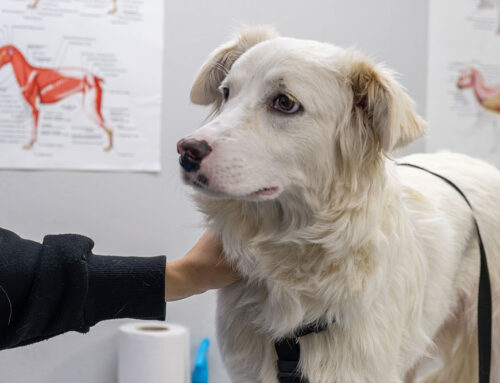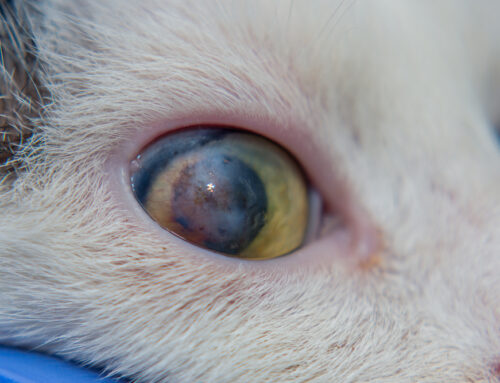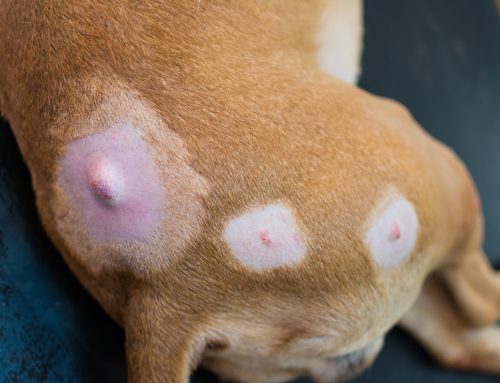Pet Anxiety: How to Recognize Stress and Help Your Dog or Cat
Is your pet trembling during storms, destroying furniture when left alone, or grooming obsessively? These may all be signs of anxiety. At Commonwealth Animal Care, we work closely with families to identify the triggers behind stress and create treatment plans that may include training, environmental changes, or medical support. Helping pets manage anxiety improves not only their comfort but also the bond they share with you.
Understanding Pet Anxiety
Pet anxiety affects millions of dogs and cats, yet many owners struggle to recognize the signs or understand the underlying causes. Because pets can’t tell us when they’re scared or stressed, it’s up to us to observe their behavior and body language carefully.
What Causes Stress in Pets
Environmental factors are often to blame. Loud noises from construction, thunderstorms, or fireworks can send sensitive pets into panic mode. Even small changes in routine- like moving to a new home, rearranging furniture, or a shift in your work schedule- can create anxiety in pets who thrive on predictability.
Social stressors are another major cause. The arrival of a new baby, the addition of another pet, or time spent alone can all trigger emotional distress. Some pets experience ongoing anxiety after conflicts with other animals in the home or from separation when their owners leave for the day.
Sometimes anxiety is linked to a physical issue. Physical discomfort such as arthritis, dental pain, or internal illness can cause restlessness or avoidance that looks like anxiety. Aging pets may also develop cognitive dysfunction, a condition similar to dementia, which often results in confusion, pacing, and new fears.
Chronic stress doesn’t just affect behavior- it can weaken the immune system, disrupt sleep, and lead to destructive or self-injurious habits. Recognizing the problem early prevents escalation and ensures an underlying medical issue isn’t being overlooked.
Identifying Signs of Anxiety in Dogs and Cats
Physical and Behavioral Indicators
Anxiety can look different in every pet, but common signs often overlap. Dogs may tremble, pant excessively, pace, spin, or chew destructively when upset. Some become hypervigilant or lose bladder or bowel control during stressful events. Cats may hide for long periods, overgroom, change litter box habits, or become unusually aggressive. In fact, many cat behavior issues are rooted in chronic anxiety rather than misbehavior.
Using Body Language to Understand Your Pet
Learning to read your pet’s body language offers valuable insight into their emotional state. Communication and canine body language includes subtle cues like lip licking, yawning when not tired, turning away, lowering the body, or tucking the tail- all classic stress signals.
For cats, the feline grimace scale helps identify pain-related tension, while feline body language such as flattened ears, dilated pupils, panting, or a crouched posture may indicate anxiety or discomfort.
Common Triggers for Pet Anxiety
Noise-Related Anxiety
Sound sensitivity is one of the most common anxiety triggers. Noise aversion in pets can start as mild uneasiness during fireworks or storms and gradually progress to panic even at subtle noises. Thunderstorms are especially challenging due to static buildup, barometric pressure shifts, and flashes of lightning- creating a multisensory overload for sensitive animals.
Social and Environmental Stressors
Life changes such as a new baby, kids leaving for college, or changing schedules can unsettle pets that depend on predictable routines. Cats are especially sensitive to environmental changes and may hide, stop eating, or act out when stressed.
Separation anxiety in dogs often leads to door or window destruction, excessive barking, and frantic escape attempts- usually within the first 30 minutes after their family leaves.
Multi-pet households can also experience tension. Addressing tension among cats requires respecting feline social boundaries and introducing new pets slowly.
Some behaviors, like reactive behavior or resource guarding, develop from fear and uncertainty. Pets that have had to compete for food or space in the past may react defensively when they feel threatened. Understanding these motivations helps reduce conflict and build trust.
Strategies for Managing and Reducing Pet Anxiety
Behavioral Training
Training helps pets build confidence and regain control over their environment. Positive reinforcement training rewards calm, desirable behaviors rather than punishing anxious responses. This method helps pets associate stressful situations with safety and success.
Games like the engage-disengage training game are effective for teaching pets to observe triggers calmly and form positive associations instead of reacting with fear.
For medical handling, grooming, or nail trims, cooperative training is invaluable. Consent-based training for dogs teaches them to participate willingly in care, while cooperative training for cats reduces fear and handling stress.
Environmental Enrichment
Mental stimulation helps reduce anxiety by providing healthy outlets for natural behaviors.
- For cats: Enrichment toys for your cat encourage hunting play, exploration, and problem-solving. Creating vertical spaces and hiding spots helps them feel secure.
- For dogs: Dog enrichment ideas like puzzle feeders, sniffing games, and rotating toys provide entertainment and focus. During walks, let dogs move at their own pace- sniffing is a natural stress reliever and form of mental exercise.
Medical and Nutritional Support
Some pets need additional help beyond training. Veterinarian-prescribed anti-anxiety medications or calming supplements can stabilize emotions and make behavior modification more successful. Products like pheromones can also promote a sense of calm and security.
Regular wellness and preventive care ensures medical conditions that mimic anxiety- such as thyroid disease or pain- are identified and treated promptly.
Working with a Veterinarian
Bringing an anxious pet to the vet can be stressful for everyone, but preparation helps. Some pets benefit from pre-visit medications that reduce fear and make handling safer. You can also make your vet visit less stressful by practicing handling at home, scheduling happy visits, bringing familiar toys and treats, and letting our team know about your pet’s specific triggers.
Diagnostic Tools and Techniques
A comprehensive evaluation can identify medical contributors to anxiety. Advanced diagnostics– including physical exams, blood work, and behavioral assessments- allow veterinarians to distinguish emotional distress from pain or illness so treatment can target the true cause.
Busting Pet Anxiety Myths
- “They’ll grow out of it.” Anxiety doesn’t fade on its own; early support makes recovery easier.
- “Punishment stops anxious behavior.” Adding negativity to fear only increases it. Positive, reward-based methods are safer and build confidence.
- “Medication is a last resort.” For some pets, medication is a compassionate bridge that allows training and behavior therapy to succeed.
FAQs on Pet Anxiety
- How do I know if my pet needs medical intervention?
If anxiety disrupts daily life, causes self-harm, or leads to destructive behavior that doesn’t improve with training or environmental changes, schedule an evaluation. - What are the first steps if I suspect anxiety?
Track when anxious behaviors occur, then visit your veterinarian to rule out medical causes. Maintain consistent routines, create safe spaces, and avoid punishment-based responses. - Will anxiety go away on its own?
Anxiety rarely resolves without intervention. Early treatment prevents it from developing into a lifelong struggle.

Building Confidence Through Understanding and Care
Recognizing and addressing pet anxiety strengthens your bond and enhances your pet’s quality of life. With patience, consistency, and professional guidance, even highly anxious pets can learn to feel secure and relaxed.
If your pet experiences panic during storms, acts destructively when alone, or shows sudden behavioral changes, professional evaluation can uncover the cause. Commonwealth Animal Care’s comprehensive diagnostics and collaborative approach address both medical and behavioral aspects of anxiety.
Contact us or request an appointment to take the first step toward helping your pet feel more confident and calm.







Leave A Comment